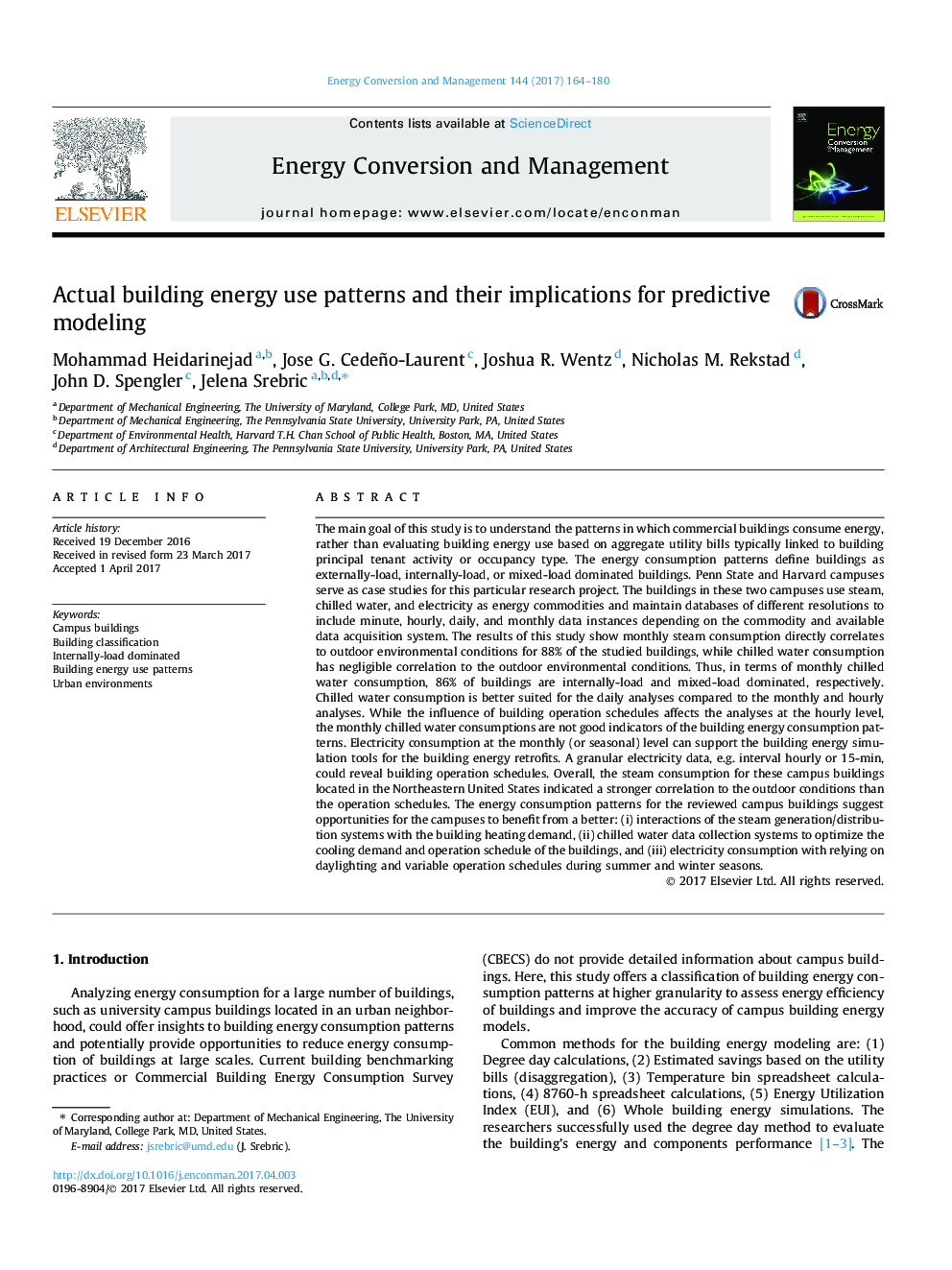| کد مقاله | کد نشریه | سال انتشار | مقاله انگلیسی | نسخه تمام متن |
|---|---|---|---|---|
| 5012654 | 1462818 | 2017 | 17 صفحه PDF | دانلود رایگان |
عنوان انگلیسی مقاله ISI
Actual building energy use patterns and their implications for predictive modeling
ترجمه فارسی عنوان
الگوهای مصرف انرژی ساختمان واقعی و پیامدهای آنها برای مدل سازی پیش بینی شده
دانلود مقاله + سفارش ترجمه
دانلود مقاله ISI انگلیسی
رایگان برای ایرانیان
کلمات کلیدی
ساختمان پردیس، طبقه بندی ساختمان، بارگذاری داخلی غالب شد، الگوهای استفاده از انرژی ساختمان، محیط های شهری،
موضوعات مرتبط
مهندسی و علوم پایه
مهندسی انرژی
انرژی (عمومی)
چکیده انگلیسی
The main goal of this study is to understand the patterns in which commercial buildings consume energy, rather than evaluating building energy use based on aggregate utility bills typically linked to building principal tenant activity or occupancy type. The energy consumption patterns define buildings as externally-load, internally-load, or mixed-load dominated buildings. Penn State and Harvard campuses serve as case studies for this particular research project. The buildings in these two campuses use steam, chilled water, and electricity as energy commodities and maintain databases of different resolutions to include minute, hourly, daily, and monthly data instances depending on the commodity and available data acquisition system. The results of this study show monthly steam consumption directly correlates to outdoor environmental conditions for 88% of the studied buildings, while chilled water consumption has negligible correlation to the outdoor environmental conditions. Thus, in terms of monthly chilled water consumption, 86% of buildings are internally-load and mixed-load dominated, respectively. Chilled water consumption is better suited for the daily analyses compared to the monthly and hourly analyses. While the influence of building operation schedules affects the analyses at the hourly level, the monthly chilled water consumptions are not good indicators of the building energy consumption patterns. Electricity consumption at the monthly (or seasonal) level can support the building energy simulation tools for the building energy retrofits. A granular electricity data, e.g. interval hourly or 15-min, could reveal building operation schedules. Overall, the steam consumption for these campus buildings located in the Northeastern United States indicated a stronger correlation to the outdoor conditions than the operation schedules. The energy consumption patterns for the reviewed campus buildings suggest opportunities for the campuses to benefit from a better: (i) interactions of the steam generation/distribution systems with the building heating demand, (ii) chilled water data collection systems to optimize the cooling demand and operation schedule of the buildings, and (iii) electricity consumption with relying on daylighting and variable operation schedules during summer and winter seasons.
ناشر
Database: Elsevier - ScienceDirect (ساینس دایرکت)
Journal: Energy Conversion and Management - Volume 144, 15 July 2017, Pages 164-180
Journal: Energy Conversion and Management - Volume 144, 15 July 2017, Pages 164-180
نویسندگان
Mohammad Heidarinejad, Jose G. Cedeño-Laurent, Joshua R. Wentz, Nicholas M. Rekstad, John D. Spengler, Jelena Srebric,
